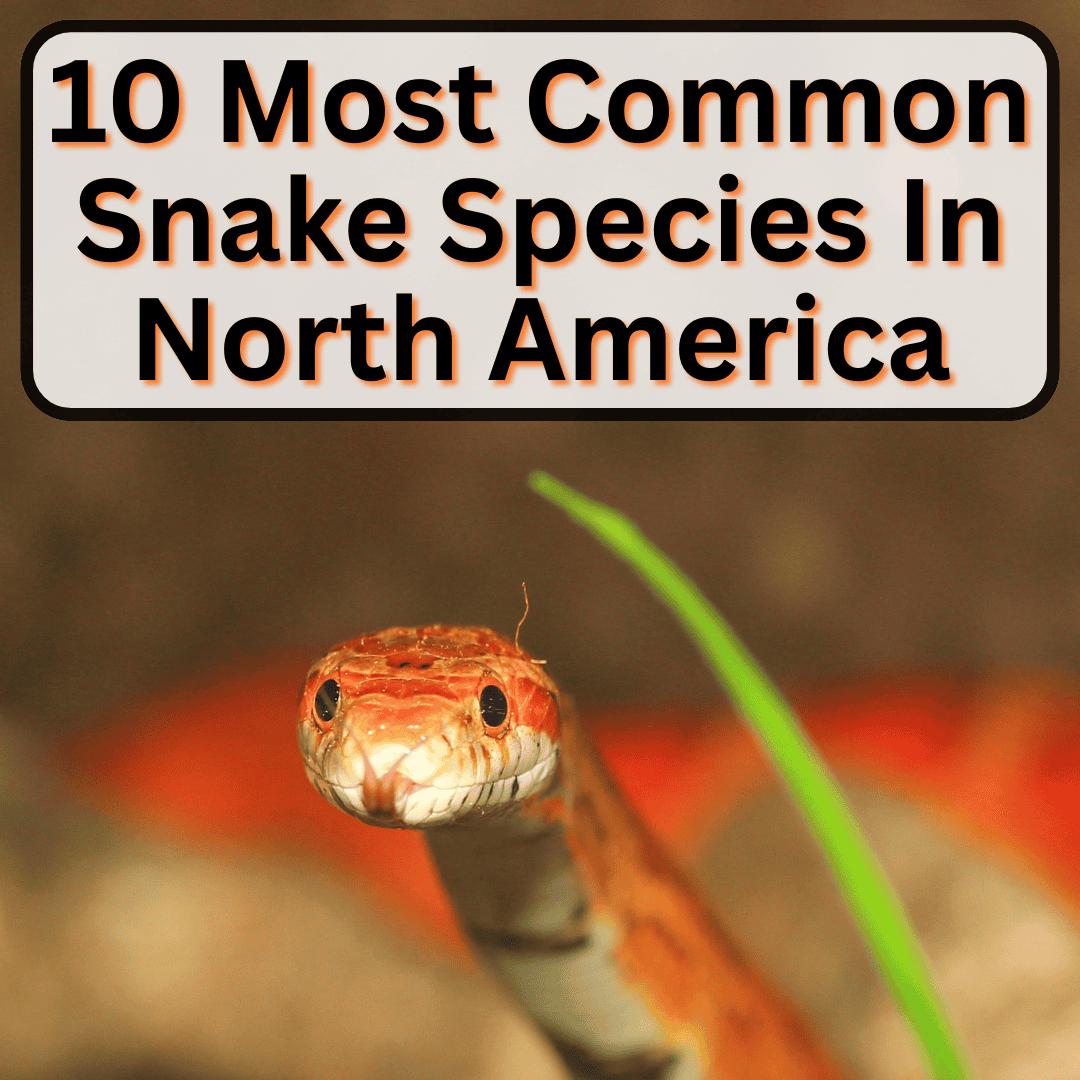
And they live in all sorts of places, from forests to deserts to grasslands.
And sometimes, right outside your door.
Most of them aren’t dangerous at all, and actually do a great job keeping pests like mice and rats in check.
But there are also some dangerous snakes in these parts.
It pays to learn to recognize them.
Getting familiar with the common snakes in your area helps you stay safe.
And maybe even appreciate these misunderstood neighbors.
Most Common Snake Species In North America
Some of the most common snakes in north America deserve a wide berth (looking at you, rattlesnakes), while others are harmless. Knowing the difference between, say, a garter snake and a copperhead, makes it easier to relax outdoors and see how these reptiles fit into the bigger picture.
1. Corn Snake
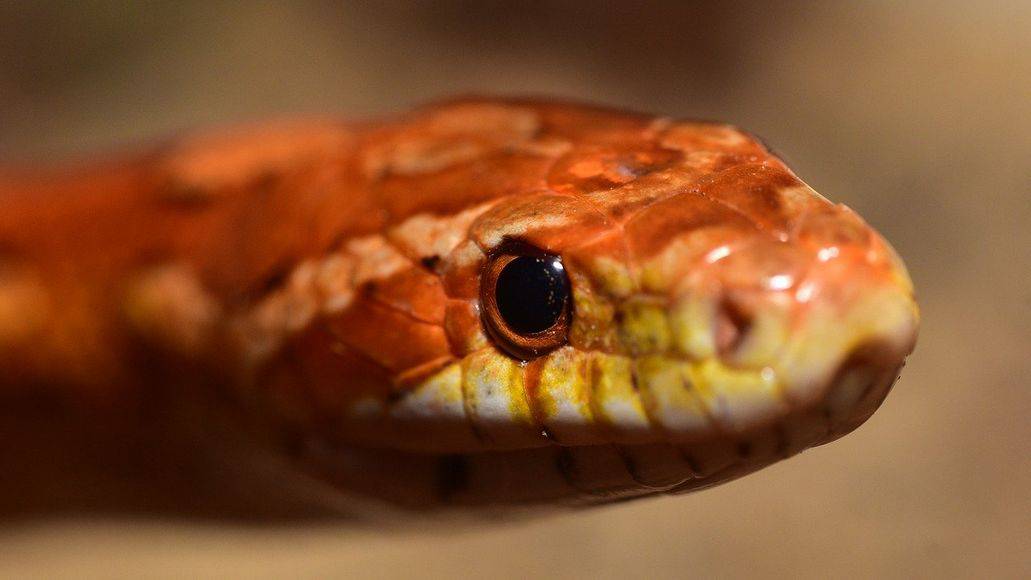
Corn snakes are all over the southeastern and central U.S.—they’re one of the most well-known snakes in North America.
Non-venomous and gentle, corn snakes kill their prey by constriction and pose zero danger to people. They’re pretty easy to spot with their bold patterns and colors. Most get to be about 4 to 6 feet long, give or take.
You’ll run into them in forests, fields, or even old barns and buildings. They seem to handle different environments just fine.
Corn snakes chow down on small mammals, birds, and reptiles—so if you’ve got mice, they’re doing you a favor.
Wild corn snakes usually live 6 to 8 years, but as pets, with good care, they can stick around over two decades. People love them as pets, especially beginners, since they’re calm and easy to handle.
Their scientific name is Pantherophis guttatus, and they’re part of the rat snake family—which, fun fact, includes dozens of species worldwide.
2. Bull Snake
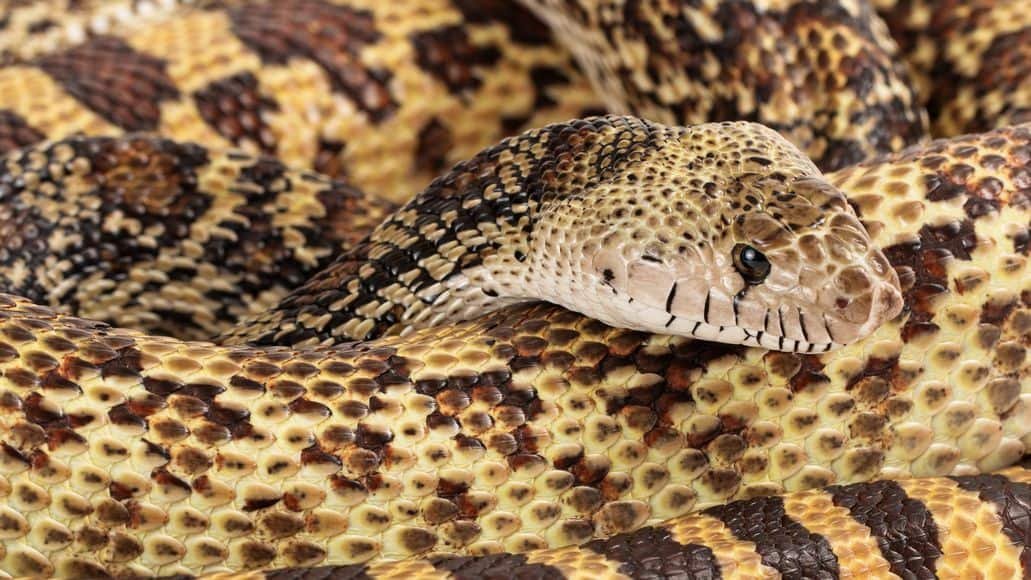
Bull snakes show up across much of North America and can grow impressively large—sometimes up to 8 feet long. They’re thick-bodied, usually yellow or tan with dark blotches. The head is pretty narrow, especially compared to venomous snakes.
At first glance, you might mix up a bull snake with a rattlesnake. But bull snakes don’t have rattles, and their heads aren’t the same triangular shape. If threatened, they’ll hiss and rattle their tails to mimic rattlesnakes, but it’s all show.
They like open spaces—prairies, fields, grasslands—and range from Canada all the way to Mexico. They seem to thrive just about anywhere. You’ll probably spot them hunting during the day. They’re surprisingly good climbers and swimmers, which helps them find food in all sorts of places.
This snake species is commonly found in backyards. Given its size and similarities to rattlesnakes, that can understandably be quite a frightening experience for some.
3. Eastern Garter Snake
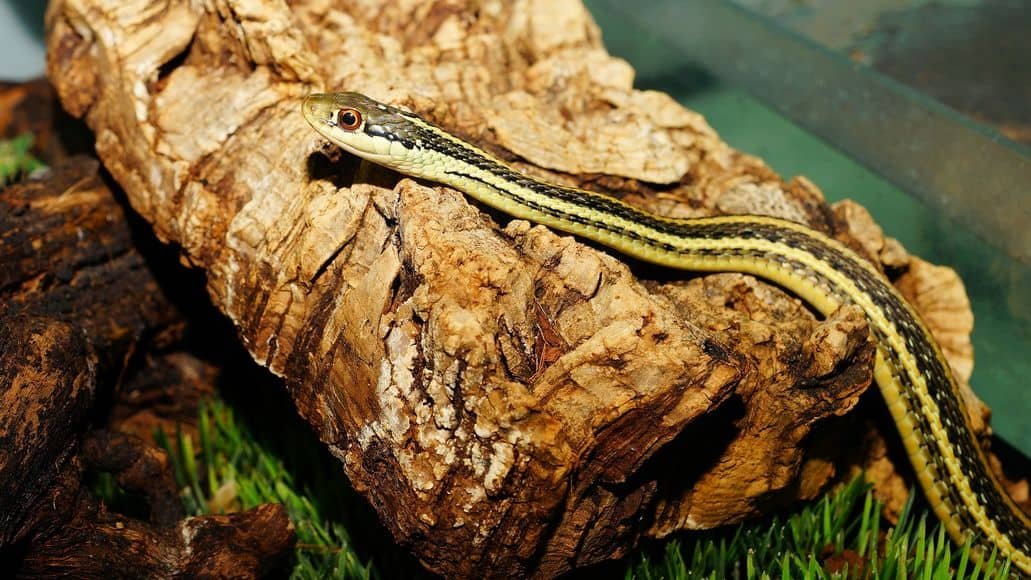
Eastern garter snakes are just about everywhere—from Canada down to the Gulf of Mexico. Honestly, they’re probably the snake you’re most likely to see. They’re easy to recognize with three long stripes running down their black, brown, or green bodies—almost like suspenders.
You might see them in your yard, a city park, or a garden. They like places near water but aren’t picky—fields, city lots, even forests work for them.
Garter snakes are completely harmless. They don’t have venom that can hurt people. Most are pretty chill and just want to be left alone.
They hunt during the day, eating worms, slugs, frogs, small fish, and the occasional bug or tiny critter. Medium-sized and adaptable, they seem to fit in almost anywhere—wetlands, meadows, woods, you name it.
4. Black Rat Snake
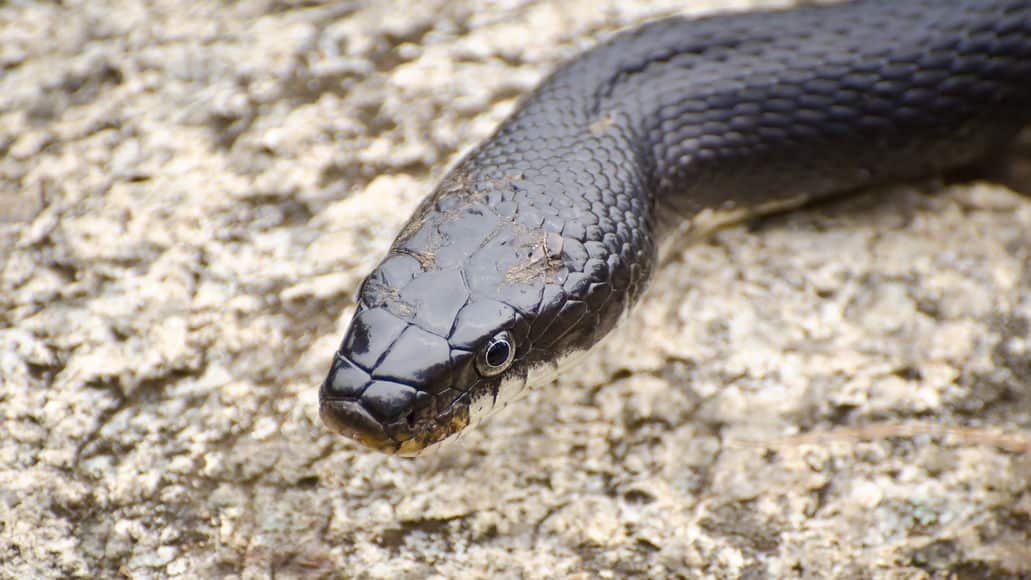
Black rat snakes hang out mostly in the eastern U.S. These snakes (Pantherophis obsoletus) are totally harmless and actually pretty helpful. They can get big—up to 6 feet long—and their shiny black color makes them stand out.
Wooded areas and forests are their favorite spots, but you’ll also see them near barns or houses. They’re not picky about where they live. These snakes are great to have around because they eat rats, mice, and other rodents that can be a headache for homeowners.
Black rat snakes are excellent climbers. They sometimes end up in trees or even on buildings looking for food.
If you bump into one, don’t panic. They’re non-venomous and usually just want to get away. Sometimes they’ll shake their tails to look scary, but it’s just a bluff.
5. Western Diamondback Rattlesnake
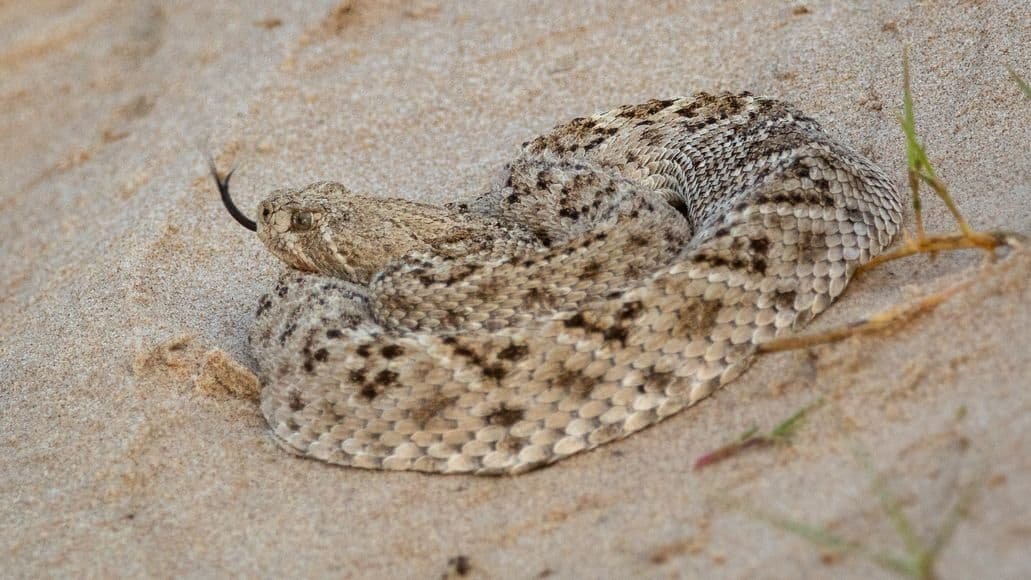
The western diamondback rattlesnake roams the southwestern U.S.—from southern California through Texas and down into northern Mexico. It’s the second-biggest rattlesnake in North America and is easy to spot thanks to the diamond-shaped markings on its back.
These snakes like dry places—deserts, scrublands, rocky hills. If you’re in Texas, Arizona, New Mexico, or parts of California, they’re around.
They’re responsible for more snake bites than any other rattlesnake in the U.S., but honestly, they’d rather avoid people if they can. If threatened, you’ll hear that famous rattle—a clear sign to give them space. Easier said than done, though, because this species aldo landed a spot on our list of snake species that are masters of camouflage.
Western diamondbacks eat rats, mice, rabbits, and other small mammals. Their heat-sensing pits help them hunt in the dark. If you’re out hiking where rattlesnakes live, it’s smart to watch your step and make a little noise so you don’t surprise one.
6. Timber Rattlesnake
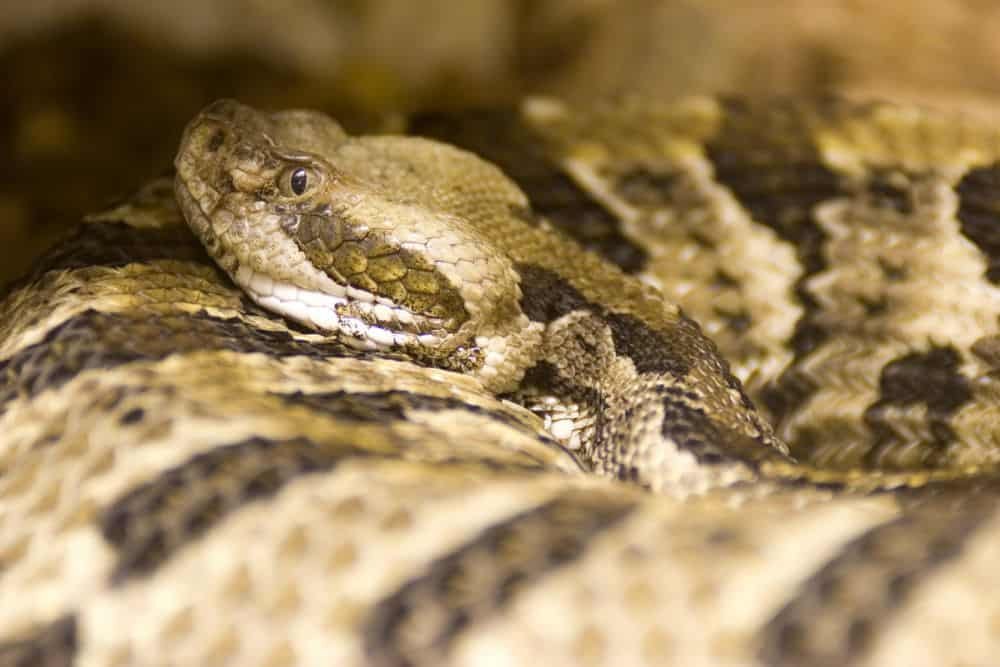
Timber rattlesnakes, sometimes called canebrake or banded rattlesnakes, are the most widespread rattlesnake species in North America. You’ll find them in forests and rocky spots all over the eastern U.S. Their tan, brown, or gray scales with dark zigzag bands help them blend right in.
They can reach up to 5 feet long, and of course, have that classic rattle on their tail. As pit vipers, timber rattlesnakes have long fangs and potent venom. They strike their prey and wait for the venom to do its work before eating.
Give these snakes plenty of space—they’ve got big fangs and strong venom, so they’re not to be messed with. Timber rattlesnakes are patient, relying on camouflage and staying still to ambush prey.
If you are in the Northeast, they’re the only rattlesnake you’ll run into. In fact, they are one of just two venomous snakes in that area.
7. Copperhead Snake
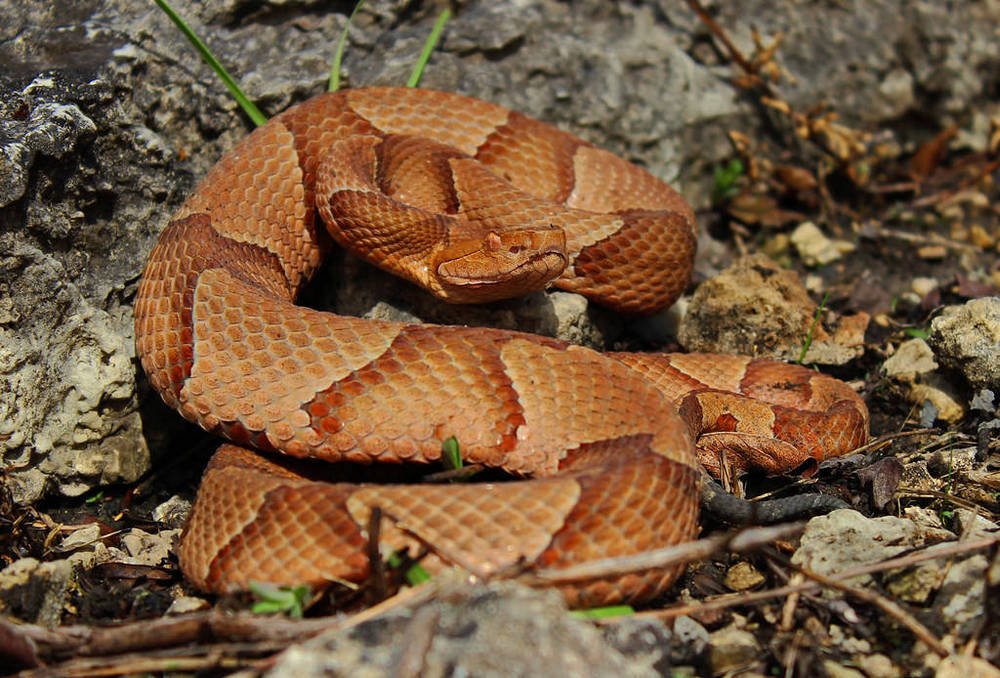
Copperheads are common in eastern and central North America, where they are one of the most frequently encountered venomous snakes.
They’re named for their copper-colored heads. They have thick bodies with hourglass-shaped patterns along their sides.
Wooded areas, rocky hills, and places near streams or old buildings are their usual hangouts. As pit vipers, they use heat sensors to track down warm-blooded prey like mice and small birds.
More people get bitten by copperheads in the U.S. than by any other snake, though their bites are rarely fatal. If you see one, just back away slowly. They usually only bite if they feel trapped or threatened.
Most copperheads grow 2 to 3 feet long. Baby copperheads have bright yellow tail tips to lure prey—kind of wild, right?
8. Cottonmouth (Water Moccasin)
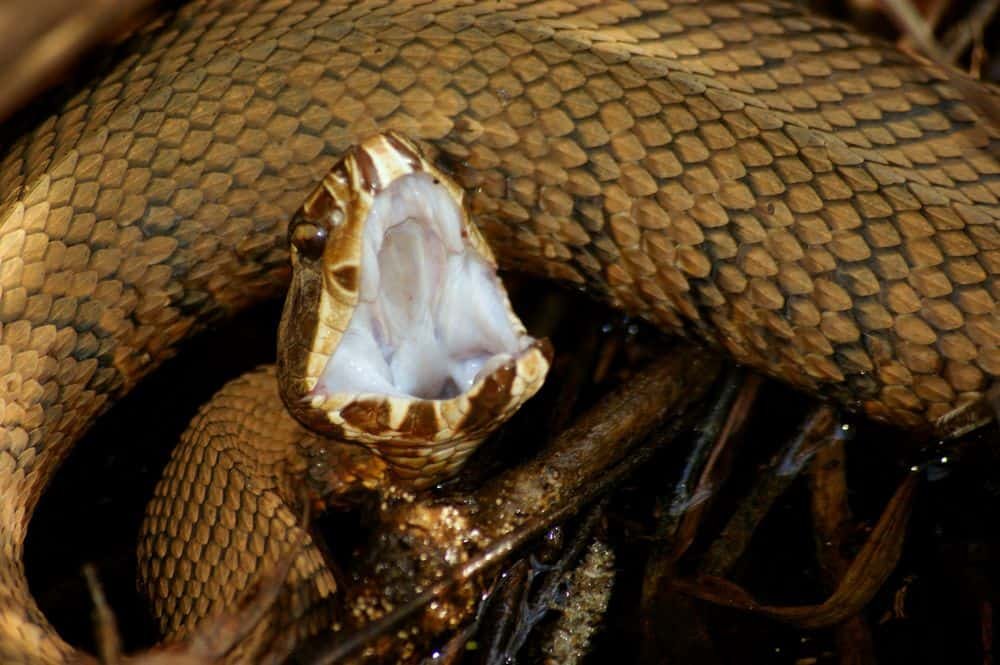
Cottonmouths live across the southeastern U.S. They love water—swamps, marshes, slow streams, you name it.
The name comes from the white lining inside their mouths, which they flash as a warning when threatened. People also call them water moccasins or swamp moccasins. They’re the only venomous water snake in North America.
These pit vipers are thick-bodied and can get pretty big. Their bites are definitely dangerous. Near water in the Southeast? Keep an eye out. Cottonmouths often hold their ground instead of slithering away.
Thick vegetation near water is their preferred spot. Sometimes you’ll see them basking on a log or swimming with just their head above water. They’re strong swimmers and spend a ton of time in or near water—unlike most other venomous snakes here.
9. Coral Snake
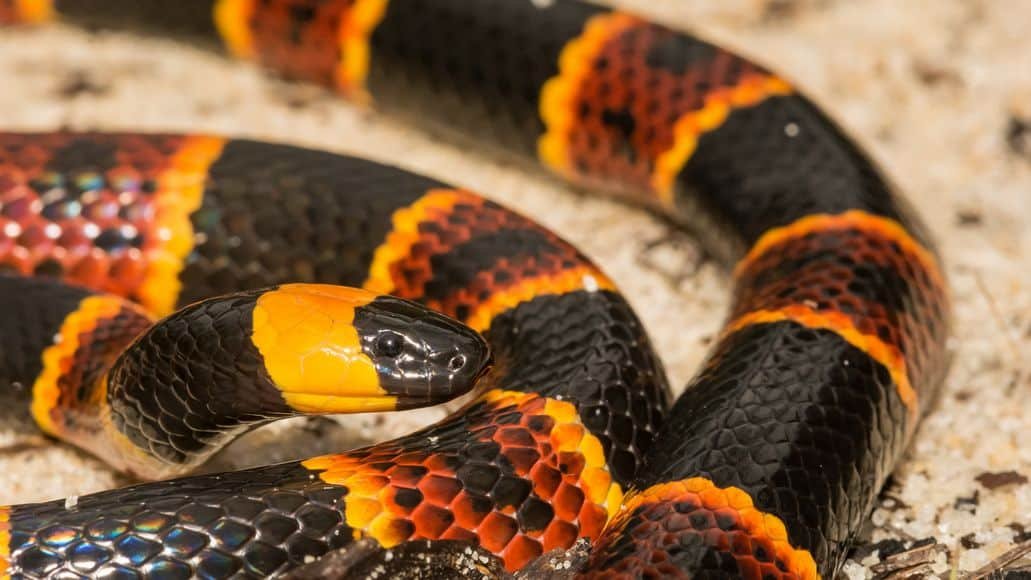
Coral snakes stand out with their bright red, yellow, and black bands. They’re venomous but pretty small, usually around 3 feet long, sometimes a bit longer.
The Eastern Coral Snake is the one you’ll find most in North America, from North Carolina to Florida, west to Texas and Louisiana.
Shy by nature, coral snakes usually avoid people and rarely bite, though their venom is extremely potent.
They like to hide—under logs, rocks, or burrowed underground in forests and fields. Coral snakes hunt other small snakes and lizards, using their venom to subdue prey.
If you live in the Southeast, you’re more likely to see one, especially with the warm climate keeping them active. Even though they’re small, coral snakes are dangerous. If you spot one, best to leave it alone.
10. King Snake
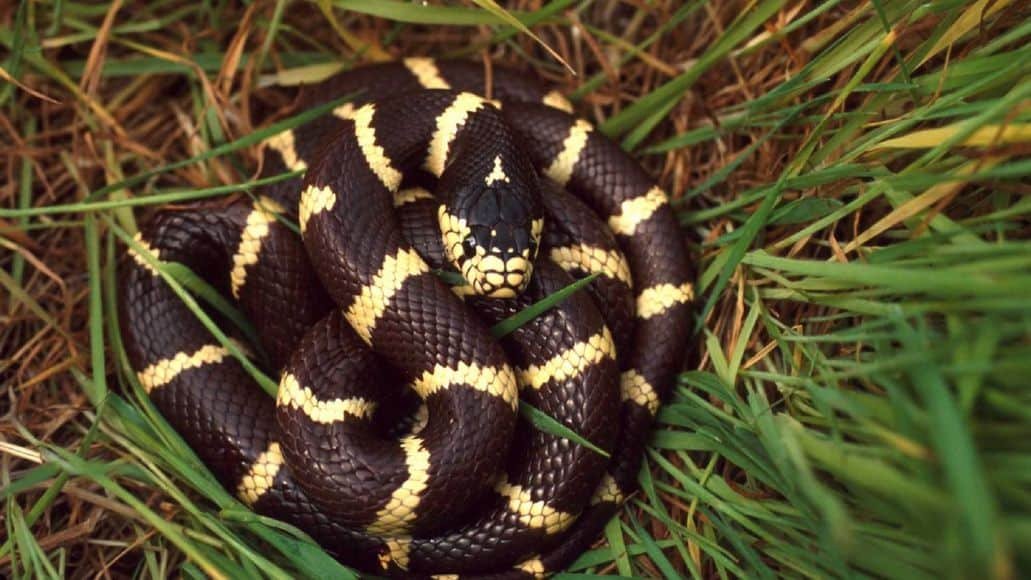
King snakes are found throughout much of North America, from the southeastern U.S. all the way to California and even into parts of Mexico.
They’re famous for their striking patterns—bands or speckles in black, white, yellow, or red, depending on the species. The California king snake and eastern king snake are two of the best-known varieties.
King snakes are completely non-venomous and pose no danger to humans. In fact, they’re called “king” snakes because they often eat other snakes—including venomous ones like rattlesnakes! Their strong immune systems make them resistant to many types of snake venom.
You’ll find them in forests, grasslands, deserts, and even suburban backyards. They’re highly adaptable and can thrive in a wide range of habitats.
Most king snakes grow 3 to 4 feet long, though some can reach up to 6 feet. They’re constrictors, meaning they squeeze their prey—usually rodents, birds, eggs, lizards, and other snakes.
King snakes are often active during the day in spring and fall, but switch to being more nocturnal in the heat of summer. They’re excellent climbers and sometimes even swim.
People love king snakes as pets because they’re hardy, generally docile, and easy to care for.
If you spot one, consider yourself lucky—they’re one of the most beneficial snakes you can have around, helping keep pest and even venomous snake populations in check.
Habitats And Geographic Distribution
Snakes in North America live just about everywhere—from scorching deserts to dense forests. Texas and Florida top the list for snake diversity, while other states have fewer species depending on climate and landscape.
Typical Environments For North American Snakes
Honestly, you’ll find snakes in almost every type of habitat. Many species prefer forests, hiding under logs and hunting small critters.
- Forest dwellers like black racers dart through trees and brush, chasing birds, mammals, and other reptiles.
- Grassland snakes stick to open fields and prairies—good hunting for rodents and plenty of sun for basking.
- Desert species survive in hot, dry places. Rattlesnakes do especially well here, going long stretches without water.
- Urban areas are home to plenty of snakes, too. Garter snakes, for instance, turn up in gardens and parks, adapting well to life around people.
- Wetland snakes stay close to ponds, streams, and marshes, hunting fish, frogs, and water insects.
Regional Differences Across North America
- Texas leads all states with the highest number of snake species. Its huge size and mix of landscapes give all sorts of snakes a place to live.
- Florida comes in second for snake diversity. The year-round warmth down there means plenty of species stick around.
- Northern states just don’t have as many types. Those long, freezing winters knock out most snakes before they get a chance.
- Western desert regions—think Arizona, Nevada—are home to rattlesnakes and other heat-loving reptiles. The Mojave rattlesnake, for example, hangs out from the Grand Canyon area down into the southwest.
- Eastern forests have their own thing going on. Timber rattlesnakes, for example, like the wooded hills in states like Arkansas.
- Coastal areas sometimes surprise people with their unique snake populations. Some snakes out there have adapted to saltwater and the weird mix of coastal prey.
Safety Tips and Responsible Encounters
Knowing what to do if you run into a snake—and just taking a few basic precautions—can keep most dangerous situations from happening. Around 8,000 people get bitten by venomous snakes in the U.S. every year, but honestly, most of those bites happen when folks try to handle or mess with the snake.
What To Do If You Encounter a Snake
- Stay calm and freeze in place if you spot a snake. Most snakes will just slip away if you give them a little space.
- Back away slowly—don’t rush it. Quick moves can freak the snake out.
- Give the snake plenty of room to get away. Trust me, it doesn’t want to stick around either.
- Never try to catch or kill the snake. Most bites happen when people get too close. Even dead snakes can bite by reflex. Weird, but true.
- Watch where the snake goes so you know which spots to avoid. Some snakes like to return to their favorite hangouts.
- If the snake blocks your path, wait for it to leave or pick another way around. Tossing stuff at it just stirs up trouble.
Preventing Snake Bites
The following are some great tips to help you avoid snake bites:
- Wear proper footwear if you’re hiking or walking anywhere snakes might be. Boots or sturdy shoes protect your feet and ankles—where bites usually happen.
- Stick to clear paths and skip the tall grass, rock piles, or logs where snakes might be hiding.
- Carry a flashlight if you’re out at night. A lot of snakes get active after dark.
- Look before you sit or reach into places you can’t see. Seriously, check before you put your hands on rocks, logs, or in the weeds.
- Keep your yard tidy—get rid of brush, tall weeds, and junk piles that give snakes a place to hide.
- Don’t reach into dark spots under porches, sheds, or woodpiles unless you check first.
North America’s Most Common Snakes: Conclusion
So, those are 10 of the most common snake species you’ll run into across North America. They turn up just about anywhere—forests, deserts, even your own backyard if you’re lucky (or unlucky, depending on your feelings about snakes).
Most snakes you’ll come across are harmless. In fact, they do a lot of good by keeping rodent and pest populations in check around your home.
There’s at least one snake species in every state. Texas and Florida have the most variety, but honestly, you could spot one anywhere from Canada down to Mexico.
If you’re out hiking or just wandering around outside, keep an eye on where you step. If you run into a snake, just give it some space—it’s probably more nervous than you are.
These snakes have been part of North America way longer than people have. They’re a big reason our wildlife is so wild and, well, interesting.
If you spot a snake, maybe take a second to appreciate it (from a safe distance, of course). You’re looking at one of nature’s true survivors—pretty cool, right?
Leave a Reply